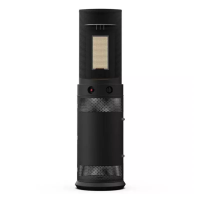Mimosa Backhaul Help Content
Mimosa Backhaul Backhaul Setup
Copyright © 2014 Mimosa Page 86
Backhaul RF Tuning Process
The Mimosa Backhaul user interface contains a set of tools for selecting channels and adjusting RF parameters. This
document describes how to use each of these to efficiently tune an RF link for optimal performance.
Within this process, it is assumed that the link performance has been modeled and verified using the Mimosa Design
application, and that the antennas have been pointed properly to maximize Rx signal strength using the Aiming
Mode. These are important prerequisites to the RF tuning process that should not be skipped.
Please follow these steps to tune a link for optimal performance:
Use the Site Survey to learn what other devices are detected in the area.1.
Use the Spectrum Analyzer to identify frequencies with the least amount of interference.2.
Use the Channel & Power page to adjust channels, channel width, Tx power and antenna gain (if applicable).3.
Use the Performance Graph to verify that PER is less than 2% on average.4.
Use the MIMO Status Tables to verify that the SNR and MCS support your throughput requirements.5.
Repeat steps 2-5 as necessary.6.
Site Survey
Perform a Site Survey to identify the 802.11 mode, frequency, channel width and signal strength of all AP’s that you
radio detects. Knowing what other devices and device types are in the immediate proximity is important for
collocation of multiple radios, as well as selecting an appropriate channel. More information
Spectrum Analyzer
The next step is to select a channel with the least amount of interference. This is important because throughput
absolutely depends on the signal to noise ratio (SNR). The Spectrum Analyzer can be accessed from either the
Dashboard or by clicking on the Channel & Power page. It actively scans the 5 GHz band to report on interference
sources that may impact link performance by frequency, amplitude, and probability of recurrence. Note that the
Spectrum Analyzer is one of several tools used to measure RF performance, and that you can not depend on it
solely for optimal channel selection. More information
Channel & Power
Since performance depends on maximizing the signal to noise ratio (SNR), use the following settings to target > 30
dB SNR per chain for maximum performance. This table summarizes the SNR required for each MCS.
Channel Settings
Start with a single 20 MHz channel, and then increase channel width and/or number of channels if SNR allows. A
single channel has higher spectral density than two channels. Narrower channels (e.g. 20 MHz) have higher spectral
density than wider channels (e.g. 80 MHz).

